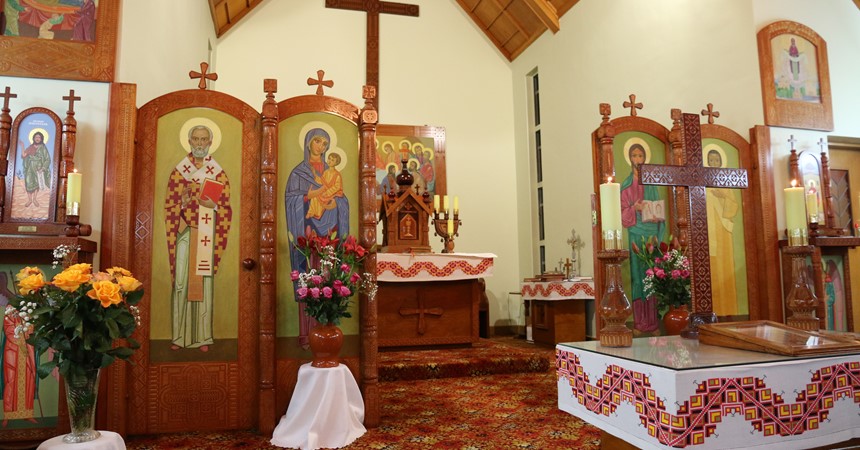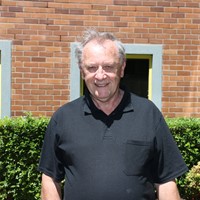Our heritage and customs and the traditions expressing our Christian faith have the same Eastern Byzantine origins as do the Orthodox and hence, we express our faith in similar ways which are different from those of the Western tradition.
The Australian Catholic Bishops Conference in its 2016 booklet titled “Eastern Churches in Australia” clarifies which Eastern traditions are Catholic.
“At present, there are twenty-three groups of Eastern Christians who, with the Latin Church, form the Catholic Church governed by the successor of Peter and bishops in communion with him.”
Byzantine Rite Eastern Ukrainian Catholics are one of the twenty-three.
The following is an outline of the Western (left) and Eastern (right) emphases in expressing the same Catholic Faith and has, with permission, been taken from material published by the Metropolitan Andrey Sheptytsky Institute of Eastern Christian Studies, Canada.
Two different traditions, one Catholic Church
The faith is the same, but expressed differently
|
Priest faces people across the altar - gathering around the Lord’s table here and now.
We like things that are new and modern, and use them in worship, too. Church buildings and services today use things from present everyday life and culture.
Prayers are kept simple, not repeated. Great care is taken to give the whole text of the service in programs or missalettes, so that the mind can grasp things clearly.
|
Priest faces East, towards the altar along with the people - leading the people to the Heavenly Liturgy in God’s Kingdom.
We like things that we have received from our ancestors. Services and church buildings, even new ones, are based on traditional and timeless models.
Prayers are repeated and sung. There is a lot of movement; many senses are used to get the whole self (mind and body) involved in worshipping God. |
Different - yet the same
Liturgy - buildings - art
|
There is a more relaxed feeling, very down to earth, using a lot of contemporary music. Liturgy has the feel of a shared celebration. Emphasis: God is here with us, so go and live this out in the world.
New churches are usually built in a very simple style, with little adornment and only a few pieces of art, to fit into the modern world and reflect modern tastes.
Emphasis: Each generation responds to God in its own way, and our current styles and fashions can give glory to God, just as the past styles did.
Contemporary artists are encouraged to let their individual experience of God come through their art. This encourages creativity and artistic freedom, but cuts down on the common ownership and understanding of this religious art by others. Emphasis: Many different styles of art help us to express what God’s love means for us. |
The use of dramatic music and actions tries to lift people up to experience a ‘taste of Heaven’.
Emphasis: This is what God has in store for us in Heaven, so go and live this out in the world right now.
Even new churches with modern lines usually have domes and a lot of icons, emphasising that traditions which the Church developed over the centuries are still meaningful today in the modern world.
Emphasis: God has been with us through the centuries. Even though things change, God’s love – and our response – are always the same, yesterday and today.
Icons express the public teaching of the Church. The individual artist’s ideas are secondary. Iconographers have a somewhat limited freedom, but the basic message of salvation in the icon is more easily grasped, once its common symbols are learned.
Emphasis: There are things about God’s love which we have all experienced and understand together. |
When thinking of major Catholic doctrines
The Oneness of God, who is also three Persons. Trinity: God as three Persons, who are also One.
The Humanity of Christ invites us, but He is also Divine. Christ: The Divinity of Christ inspires us, but he is also human.
The Pope is the guarantor of unity. Dioceses are directly under his jurisdiction. Church: Bishops in synods (in communion) with the Pope guarantee the unity of the Church.
Mary as Virgin and Mother. We relate to her sharing in the earthly life of Jesus. Mary: Mary as Theotokos (God-Bearer) or Mother of God since Christ is God. She stands at the head of all of God’s creation.
Model: Lord’s Supper; down to earth atmosphere; clear messages with simple words; very frugal use of symbols; focus on the here and now; beauty in simplicity; use of various musical instruments in the liturgy.
Liturgy: Model: Heavenly Liturgy; cosmic realities; subconscious, holistic, more use of senses; repetition as a way into the deeper self; focus on eschatology (i.e. heaven on earth); beauty in its fullness; liturgies sung from beginning to end – the human voice is the most important instrument.
More linear; either – or; often prefer juridical, philosophical clarity to poetic synthesis. Thinking: More symbolic; more paradoxical; both-and; prefer poetic synthesis to philosophical analysis.
Western and Eastern Catholics approach, teach and celebrate their faith differently, but they share the same Catholic Faith.
Western and Eastern Catholics do not contradict each other. They complement each other.
One need not be ethnically Ukrainian to join in our liturgy. The Ukrainian Catholic Church is a church that comes from the Ukrainian people, but is for the entire human race.
To share what you think of Aurora, complete survey here.























































































